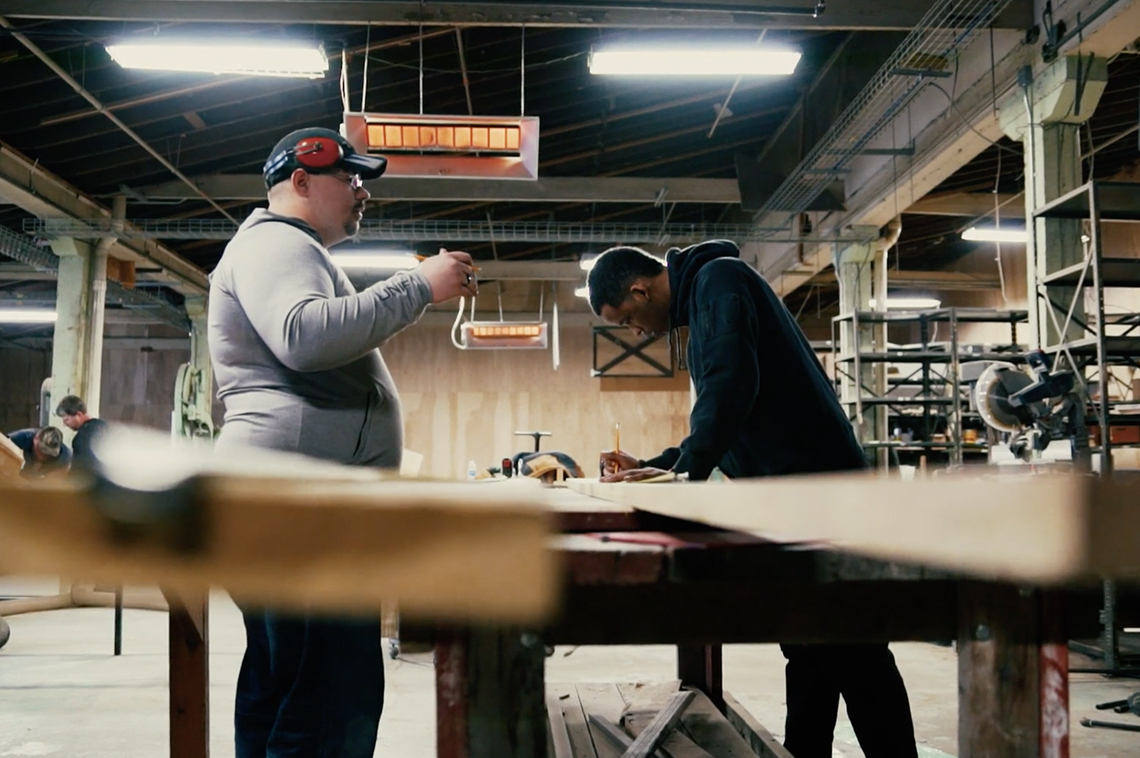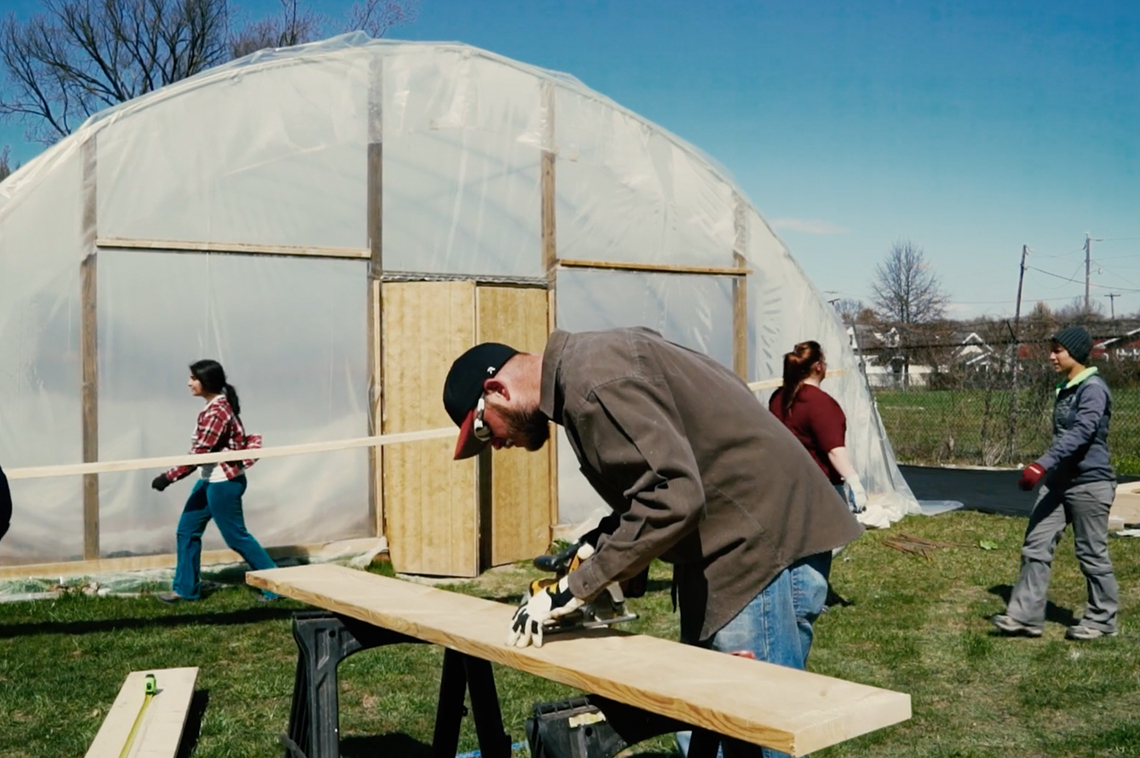


The mission statement of Coalfield Development is “We believe in developing the potential of Appalachian places and people as they experience challenging moments of economic transition by unlocking people’s creative power to transform perceived problems into opportunities in the communities we call home. We empower people to have faith in themselves to learn and grow. People who have never dreamed of earning a degree walk across the graduation stage with pride and work beside our employees improving our own communities in real, tangible ways, such as rehabilitating dilapidated buildings, repurposing abandoned mine lands, and starting new businesses.”
We asked Executive Director Brandon Dennison to tell us more about how his organization is using creative placemaking strengthening courage, creativity and community in Appalachia.
“A question posed to me fairly regularly is: “what exactly do you mean by creative placemaking?” I mean lots of things, but this is usually how I answer: “it’s the opposite of franchises and box-stores.” Creative placemaking is community development that’s grounded in the uniqueness of a place, and it’s creating opportunities that improve a place rather than abuse it, respecting the people rather than ignoring or denigrating them. That’s my best shot at a broad definition for this movement taking the community development world by storm.
Creative placemaking is particularly important in rural settings where entire ways of life are under threat, where unique cultures are dying out, where an opioid epidemic is spreading quick, and where people are often disrespected and insulted in pop culture and media. Hamlin, West Virginia in Lincoln County is no stranger to such challenges. So when our community development organization embarked on an effort to save a USDA affordable housing facility from foreclosure, reinvest in the community, and create job opportunities for unemployed people we decided to first be intentional and fully present for multiple community listening sessions. We co-designed solutions to Lincoln County’s problems in community with the people of Lincoln County.
When it came time to re-name and re-brand the USDA housing property, we wanted to come up with something place-affirming, something creative, something stirring. We looked to Hamlin’s most famous citizen for inspiration: Chuck Yeager, the first test pilot to ever break the sound barrier. If you haven’t heard of him, you should definitely check him out (the late Tom Wolfe’s The Right Stuff is a good place to start). When Yeager broke the sound barrier as a test-pilot, he did so over-top a remote New Mexico town called Victorville. This struck us. We could design our project in a way that empowered people to break through barriers, towards fuller life. In doing so, we could inspire a distressed affordable housing property to reconnect with its town’s proud heritage, fight back against drugs and blight, and emerge victorious.
We’ve been discouraged at many different points, especially when having to evict some tenants for methamphetamine production, including the associated (and very expensive) remediation costs. But we’ve persevered. And that, too, is what creative placemaking is all about: perseverance, resilience. When a business owner is not invested in a place, connected to its people, there is far less incentive for patient, caring stewardship. Distance creates conditions for dehumanization. This is partly how the USDA facility fell in to such disrepair; there were 17 different owners, and none of them actually lived in the state of West Virginia. Nobody really cared. The same can often be said for franchises and big-box stores. Now the property belongs to the community, and that makes all the difference in the world. When we recently unveiled the new Victorville name at a ceremony on site, there were dozens of children on-hand to unveil the new sign. A better future is at hand.
The coolest part of the Victorville story is that renovations will be completed by local people, formerly unemployed. At Coalfield Development, are pioneering new and viable economic markets that end our dependence on coal and diversify our economy: solar, organic agriculture, sustainable construction, arts and culture, conservation. We incubate and grow new businesses in these sectors. These businesses directly employ formerly unemployed people (including coalminers) who develop the skills necessary for the new markets to succeed and attract new investment to the sector. Our primary social innovation is the 33-6-3 model whereby employees work 33 hours each week (paid) staffing these new businesses; 6 hours of coursework at the community college pursuing an Associate’s Degree in Applied Science, and 3 hours of life-skills asset building.
That “3” in our model is very much place-based and creative. For all crew-members (some call them “trainees”), each day starts with a “Personal Development Journal.” The journal provides a structure for our crew members to go deeper on the themes for that month. Each month has a professional and personal theme. For example, this month’s professional theme is focus. So, there are shared experiences our crew members do together that enhance focus such as skeet shooting or a free-throw basketball competition. Each theme has a West Virginian associated with it who embodies the theme, so that we can learn our history, build pride, and show that amazing talent comes from right here in Almost Heaven. Importantly, these West Virginians represent a diverse array of race, gender, ethnicity, and class. The West Virginian for focus is Pearl S. Buck. The personal theme for August is “long-range-view decision making” and the West Virginian for that them is John Forbes Nash, pioneer of game theory. The shared experience is a chess tournament. Importantly, we’re continually looking to artists and creatives to add texture and form to these personal development efforts.
Ultimately, our personal development process culminates with an emphasis on citizenship. We have to care for ourselves before we can care for others, but it’s not all about us. How can we fully live in to our role as citizen, especially in small rural towns where our voice can be heard by just about everybody, but where we might feel overwhelmed by the challenges? We can start by simply caring. We can know our neighbor. We can work together to ensure children have a decent place to grow up. We can start new businesses, businesses that are accountable to community. We can support one another in living fully, looking to our culture and heritage for inspiration.
This piece is dedicated to Claude Karr, who is primarily responsible for the project described herein, and Brian Jackson who was born in Lincoln County, West Virginia, recently departed this earth, and told me during our last conversation of his desire to eventually make his way back to Lincoln County.





